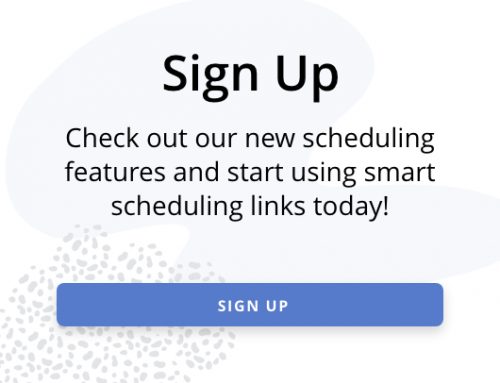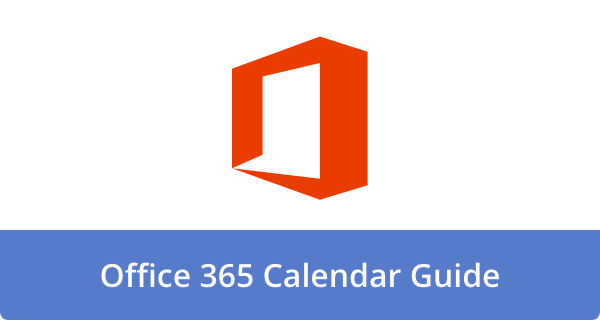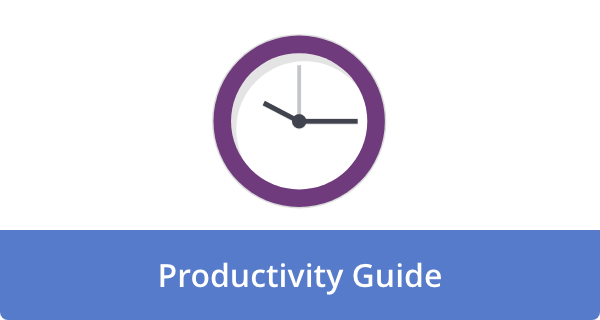

Professional Wellness Month is a timely reminder as June rolls around: your well-being doesn’t end after clocking out. In fact, for long-term success and happiness in the workplace, it is crucial to nurture your mental, physical, and emotional well-being.
Let’s be honest, though. There are still many workplaces where the grind culture is alive and well. Emails don’t stop at 5 p.m., breaks aren’t a luxury, and stress is accepted as a badge of honor. During Professional Wellness Month, employers and employees are encouraged to prioritize healthy habits, strong communication, supportive leadership, and sustainable workloads.
Throughout this post, we’ll explore what professional wellness means, why it matters, and how you can take action to feel better, work smarter, and live more fully.
What Exactly Is Professional Wellness? It’s More Than Just Avoiding Burnout.
Basically, professional wellness is the overall quality of your work experience. I’m talking about how your job affects your health in every way, not just financially. So, let’s break it down into key components;
- Physical wellness. This dimension concerns how your work environment and schedule support your physical well-being. It’s about ergonomics, movement, healthy food, and, most importantly, reasonable work hours that allow for adequate rest and recovery.
- Mental and emotional wellness. This pillar focuses on psychological well-being at work. It involves effectively managing stress, cultivating positive and respectful relationships with colleagues, finding a sense of purpose in daily responsibilities, and retaining emotional resilience. Overall, it’s about keeping a positive attitude and balancing your professional obligations.
- Work-life balance (or integration). This is perhaps the most discussed aspect. In other words, it is about finding a healthy balance between work and personal life. It’s all about having time, energy, and mental space to pursue hobbies, nurture relationships, get involved in the community, and just recharge. Professional wellness is about more than escaping burnout; it’s about creating an environment in which you can thrive.
Why Professional Wellness Matters More Than Ever Before
It has never been more important to talk about professional wellness. Over the past few years, global upheavals and dramatic shifts in working models have fundamentally changed how and where we work, leaving countless professionals struggling to adjust and keep up.
Burnout is skyrocketing.
The statistics are stark and alarming. According to a 2024 Gallup survey, 23% of employees feel burnt out at work very often or always, while 44% feel burnt out sometimes. This isn’t just an individual issue; it’s a widespread epidemic impacting productivity, morale, and retention across industries.
The nuances of remote and hybrid work.
They have introduced new complexities despite the flexibility of remote and hybrid work models. Increasingly, the lines between professional and personal life have blurred, making it difficult to truly “switch off” and recharge. Disconnection can be a real challenge when working from home.
Evolving employee expectations.
In today’s workplace, particularly among Gen Z, well-being, autonomy, and feeling purpose are increasingly valued. People are no longer willing to accept jobs that compromise their mental or physical health. Because of this shift in values, employees are more likely than ever to seek out and transition to jobs that align with their holistic well-being.
Prioritize holistic well-being.
As reported by Gallup, employers who take care of their employees’ health and well-being see measurable benefits, including higher productivity and profitability. Employees who strongly agree that their employer cares about their overall well-being include;
- 69% less likely to seek a new job
- 71% less likely to experience burnout
- 36% more likely to thrive
- 3x more likely to be engaged at work
- 5x more likely to strongly recommend their company as a place to work
Additionally, many workers place work-life balance and personal well-being at the top of their priority list when choosing to stay or leave an organization. So, ensure you’re embracing Employee Wellness Month by appreciating the whole employee, 24/7/365.
A strategic business imperative.
An effective wellness culture extends far beyond individual health. In addition to improving overall productivity and employee engagement, professional wellness promotes positive employer branding and lower turnover rates. It’s a win-win situation for everyone.
The 7 Pillars of Professional Wellness: Your Actionable Roadmap
Let’s break down professional wellness into seven distinct yet interconnected pillars. Focusing on these areas this month will set you up for sustained happiness.
1. Workplace health: Your body is your instrument.
Your physical well-being is the foundation of your professional performance. In the workplace, how you treat your body directly impacts your energy levels, focus levels, and overall capacity.
Tips for action: Make stretching a habit, even if you only stretch for a minute or two every hour. To integrate physical activity into meetings, opt for walking meetings whenever possible. Also, be sure to keep healthy snacks at your desk to avoid energy crashes. Invest in or advocate for ergonomic furniture and tools to support good posture and reduce strain.
2. Managing mental health and stress: Fortifying your mind.
Despite its silent nature, chronic stress harms productivity and well-being. It can cause energy loss, clouded judgment, and serious health problems. So, an effective stress management program is a must.
Tips for action: Try to incorporate mindfulness or deep breathing exercises into your day, perhaps for 2-3 minutes between tasks. You should also be assertive in setting clear boundaries regarding your working hours, which you should adhere to. If you need a genuine break, don’t be afraid to use mental health days without guilt. Establish a culture of support by encouraging open discussion about stress with colleagues and supervisors.
3. Work-life integration: Creating a harmonious rhythm.
Instead of seeing work and life as opposing forces, strive for a harmonious integration. You don’t have to blend everything into one chaotic mess. However, you need to maintain a healthy rhythm in which effort in one area is balanced by rest and fulfillment in another.
Tips for action. Don’t look at vacation time as a bonus but as an opportunity for rejuvenation. Make a point of scheduling non-work activities that genuinely bring you joy, whenever you can, and unplug after hours. For example, set your phone to “Do Not Disturb,” avoid checking email, and create a clear mental divide between work and home.
4. Growth and purpose: Fueling your professional soul.
Professional wellness begins when you feel connected to something meaningful and like you’re growing. When motivation and morale are undermined, productivity can suffer.
Tips for action. You should set short- and long-term goals for your professional development. Also, engage in projects that align with your core interests or take advantage of your strengths. And, whether taking courses, mentoring, or taking on new challenges, never be afraid to ask for and seek constructive feedback.
5. Establishing a supportive workplace relationship.
A supportive and positive work environment is the opposite of a toxic one, which acts as a powerful buffer against stress and fuels resilience.
Tips for action. Honesty is the best policy when showing appreciation to your team members. Rather than letting conflicts fester, address them directly and respectfully. Whether big or small, celebrate victories together to foster a sense of achievement. To build camaraderie and informal relationships, participate in team-building or social events.
6. Environmental wellness: Optimizing your physical space.
Despite often being overlooked, your immediate environment significantly affects your well-being and productivity.
Tips for action: Don’t be afraid to personalize your desk in a way that brings you comfort or inspiration, and stay committed to keeping it clean and organized. Adjust the lighting to reduce eye strain and improve alertness. You can also create a more focused environment at your workplace by using noise-canceling headphones.
7. Leadership and organizational culture: The systemic impact.
Even though individual habits are crucial to professional wellness, it is not solely the individual’s responsibility. In large part, it is determined by the organization’s culture and its leaders’ behavior.
Tips for leaders. Be an example of healthy behavior. For example, you can leave on time, take breaks, and take your own vacation days. Also, promote open communication about workloads, stress levels, and overall health. Further, offer wellness programs or stipends for fitness, mental health support, or personal development. In addition, ensure that work-life boundaries, flexible schedules, and remote work options are implemented and adhered to.
How to Celebrate Professional Wellness Month — and Make It Count
As part of Professional Wellness Month in June, you can upgrade your workplace culture and habits. As such, individuals and organizations can act in the following ways:
For individuals;
- Take a break (seriously). Permit yourself to rest this month. Spend a few days relaxing, running errands, revisiting hobbies, or simply doing nothing. Remember, rest shouldn’t be a luxury but a tool for productivity.
- Start a 30-day wellness challenge. Invite your colleagues to join you in daily wellness habits, such as walking breaks, staying hydrated, or committing to screen-free evenings.
- Schedule a mid-year career check-in. Discuss your professional development with a mentor, manager, or career coach. Take advantage of this time to assess your direction, goals, and overall well-being.
- Audit your calendar. Review your weekly schedule. Which meetings drain you? Which tasks energize you? Using these insights, you can make more informed time-management decisions.
- Declutter your workspace. A clean, organized environment increases focus, saves time, and reduces stress.
- Try something new. Explore fresh habits like lunchtime yoga, a weekend digital detox, batching tasks, or testing a “4-day workweek.”
For employers and teams;
- Host wellness workshops. Invite experts to speak on topics such as stress reduction, mindful eating, ergonomics, and resilience building.
- Offer wellness incentives. Offer perks like gift cards, fitness class reimbursements, mental health support, or a bonus PTO.
- Encourage walking meetings. Swap conference tables for movement. Walking stimulates creativity, improves health, and strengthens team connections.
- Run anonymous wellness surveys. Gather honest feedback on employee well-being, workload, and company culture. Insights can guide meaningful improvements.
- Introduce no-meeting days or quiet hours. Block off time for deep, uninterrupted work. By reducing meeting overload, employees are more likely to focus and thrive.
- Promote volunteering. Encourage employees to give back. It has been shown that volunteering contributes to a more positive workplace environment, higher job satisfaction, and stronger engagement.
Professional Wellness Month is more than a calendar event—it’s an opportunity to invest in your team, your culture, and yourself. In the long run, even small changes can have a profound impact, so take the time to make it count.
Wellness Beyond June: Cultivating Lasting Change
Even though Professional Wellness Month serves as a powerful catalyst for change, the ultimate goal is to cultivate lasting habits and foster a well-being culture far beyond June. Don’t let these resolutions disappear like a forgotten New Year’s resolution.
- Make it a regular check-in. Keep track of your wellness goals by scheduling quarterly personal check-ins to assess your progress.
- Be an advocate. Whenever you see opportunities for systemic change, you can respectfully advocate for policies and practices that will support well-being within your team or company.
- Embed wellness into your identity. Don’t look at wellness as an additional perk, but as something integral to your professional identity. Keep it at the top of my mind as a daily priority.
Final Thoughts: Your Wellness is Your Wealth
You are more than a job title or a to-do list. As a person with real needs, your health at work is important — both for your success and mental health. In addition to a campaign, Professional Wellness Month represents a call to action.
During this month, reflect on how you work and wish you worked. Can you do anything today to protect your energy, boost your performance, and enjoy your career more?
In the end, your health is your wealth. And June is the perfect time to invest.
FAQs
When is Professional Wellness Month observed?
Every June, Professional Wellness Month is celebrated. This time is dedicated to highlighting and emphasizing the importance of mental, emotional, and physical health within the work environment. Although it is an annual observance, its principles and practices are designed to be incorporated into daily work lives.
What exactly is “professional wellness”?
The concept of professional wellness goes beyond just being healthy. The concept encompasses many interconnected aspects of a person’s well-being in their work environment. Included in it are;
- Physical wellness. Exercise, proper nutrition, adequate sleep, and preventive care are essential for maintaining a healthy body. As a result, you will have more energy and stamina for work.
- Mental/emotional wellness. A positive mindset, stress management, resilience building, and mental health support are all important. Without them, we are less able to concentrate, create, and regulate our emotions.
- Social wellness: The ability to develop positive relationships with colleagues, supervisors, and clients and foster a sense of belonging in the workplace. By reducing feelings of isolation, a positive work environment is created.
- Financial wellness. It is essential to feel secure about your financial situation. You should manage debt, plan for the future, and have access to resources that reduce financial stress. At work, financial worries can significantly impact productivity and focus.
- Purpose/occupational wellness. Having the opportunity for growth and skill development in your work, feeling aligned with your organization’s mission, and finding meaning and satisfaction in your work. Job satisfaction depends on overall fulfillment.
- Environmental wellness. The physical environment should be safe, comfortable, and conducive (e.g., proper ergonomics, good lighting, and reasonable noise levels).
Professional wellness is about creating an environment where individuals can flourish individually and professionally.
Why is professional wellness so important for individuals?
Professional wellness isn’t just a nice-to-have; it’s essential for long-term health, career fulfillment, and overall quality of life.
- Combats burnout. Burnout is a pervasive issue in today’s work culture. By focusing on wellness, individuals can recognize and address stressors, set boundaries, and integrate recovery into their routines, preventing exhaustion’s debilitating effects.
- Enhances productivity and focus. Being more efficient, productive, and focused is natural when you’re well-rested, less stressed, and mentally clear. When you are healthy, you can perform at your best.
- Improves mental and physical health. In addition to reducing chronic health conditions, proactive wellness practices can lower stress levels, improve moods, and strengthen the immune system.
- Boosts job satisfaction. You are more likely to feel valued and engaged if you feel supported by your employer and have the opportunity to care for your well-being in your role.
- Increases resilience. By focusing on wellness, individuals can more effectively bounce back from setbacks, adapt to change, and tackle challenges with greater equanimity.
- Supports work-life balance. Professional wellness promotes a healthy separation between work and personal lives, resulting in a more balanced and fulfilling existence.
What are some common activities and initiatives during Professional Wellness Month?
During Professional Wellness Month, organizations can launch or amplify wellness programs. Wellness has many dimensions, which are often explored through activities.
Physical wellness.
- Step challenges. Organize company-wide competitions to encourage employees to increase their daily step count.
- Fitness classes. Yoga, Pilates, stretching, and meditation sessions can be conducted on-site or virtually.
- Healthy eating initiatives. You can offer nutrition-rich snacks, show how to cook healthy, or share healthy recipes.
- Ergonomic assessments. Advice on optimizing workstations to prevent discomfort and injury.
- Walking meetings. Encourage teams to conduct meetings outdoors while walking for fresh air and movement.
Mental & emotional wellness.
- Mindfulness & meditation sessions. Providing employees with guided practices to reduce stress and improve focus.
- Stress management workshops. Identifying coping mechanisms, managing time, and building resilience.
- Employee Assistance Programs (EAPs). Raising awareness of and providing access to confidential counseling and support services.
- Mental health first aid training. Providing managers and employees with the knowledge and skills to recognize and respond to mental health challenges.
- Gratitude practices. Encourage journaling or gratitude exercises.
Social wellness.
- Team-building activities. Create events encouraging teamwork and connection (e.g., scavenger hunts, virtual game nights).
- Volunteer opportunities. Organize company-sponsored days for employees to volunteer in the community.
- Book clubs or discussion groups. Focused on wellness topics or for general social connection.
Financial wellness.
- Financial literacy workshops. There could be budgeting, debt management, retirement planning, or investing sessions.
- Access to financial counseling. By connecting employees with financial advisors, they can receive personalized guidance.
- Emergency fund challenges. Providing employees with encouragement and support to save.
Overall & environmental wellness.
- Flexible work arrangements. Offering flexible hours, remote work options, or compressed workweeks to promote work-life balance.
- “No meeting” or “focus” blocks. Setting aside specific times for uninterrupted deep work.
- Wellness newsletters/resources. Sharing tips, articles, and success stories.
- “Desk plants” initiative. Encourage greenery in workplaces to improve air quality and mood.
- Recognizing and rewarding wellness efforts. Recognizing employees who participate in wellness programs or demonstrate healthy habits.
Featured Image Credit: Photo by Daniil Kondrashin; Pexels











John Rampton
John’s goal in life is to make people’s lives much more productive. Upping productivity allows us to spend more time doing the things we enjoy most. John was recently recognized by Entrepreneur Magazine as being one of the top marketers in the World. John is co-founder of Calendar.